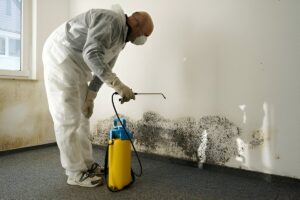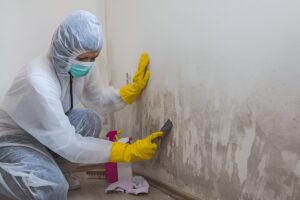Experiencing flood damage in Hackensack NJ, can be a distressing event that leaves homeowners feeling overwhelmed and uncertain about the next steps. The aftermath of flooding not only poses immediate risks to property but also creates an environment conducive to mold growth, which can lead to serious health issues. Understanding how to navigate the recovery process is crucial for restoring your home and ensuring the safety of your family. This article will guide you through the essential steps to take after flood damage, focusing on mold risks and effective recovery strategies.
Understanding Flood Damage
Flood damage can occur due to various factors, including heavy rainfall, storm surges, or even plumbing failures. When water infiltrates your home, it can lead to significant structural damage and create a breeding ground for mold and mildew.
Types of Flood Damage
- Structural Damage: This includes damage to walls, floors, and foundations. Water can weaken the structural integrity of your home, leading to costly repairs.
- Electrical Damage: Water exposure can compromise electrical systems, posing a fire hazard and risking electrocution.
- Content Damage: Personal belongings, furniture, and appliances can be severely affected by water, leading to loss and the need for replacement.
Immediate Risks
After a flood, the immediate risks include:
- Injury from Debris: Floodwaters can carry debris that may cause injury.
- Contaminated Water: Floodwater can be contaminated with sewage, chemicals, and other hazardous materials.
- Mold Growth: Mold can begin to develop within 24 to 48 hours after water exposure, making prompt action essential.
Assessing the Damage
Before taking any action, it’s vital to assess the extent of the flood damage in your home.
Safety First
- Evacuate if Necessary: If the flooding is severe, prioritize your safety and evacuate the premises.
- Turn Off Utilities: If it is safe to do so, turn off electricity and gas to prevent hazards.
Documenting the Damage
- Take Photos: Capture images of the damage for insurance claims.
- Make a List: Document all damaged items and areas for a comprehensive assessment.
Contacting Professionals
Once you have assessed the damage, it’s time to reach out for professional help.
Restoration Services
- Water Damage Restoration: Hire a certified water damage restoration company to handle the cleanup and repairs. They have the necessary equipment and expertise to mitigate damage effectively.
- Mold Remediation: If mold is present or suspected, a mold remediation specialist should be contacted to ensure safe removal.
Insurance Claims
- Notify Your Insurance Company: Report the damage as soon as possible to initiate the claims process.
- Provide Documentation: Submit your photos and lists to support your claim.
Cleaning Up After Flood Damage
Cleaning up after flood damage is a critical step in the recovery process.
Safety Precautions
- Wear Protective Gear: Use gloves, masks, and boots to protect yourself from contaminants.
- Ventilate the Area: Open windows and doors to allow fresh air to circulate and help dry out the space.
Water Removal
- Use Pumps and Wet Vacuums: Remove standing water as quickly as possible to minimize damage.
- Drying: Utilize fans and dehumidifiers to dry out affected areas thoroughly.
Mold Risks and Prevention
Mold poses a significant risk after flood damage, and understanding how to prevent its growth is essential.
Understanding Mold Growth
- Conditions for Growth: Mold thrives in damp, warm environments. After flooding, the combination of moisture and organic materials creates an ideal breeding ground.
- Health Risks: Mold exposure can lead to respiratory issues, allergic reactions, and other health problems.
Preventing Mold Growth
- Dry Thoroughly: Ensure all areas affected by water are completely dried within 24 to 48 hours.
- Use Mold Inhibitors: Consider applying mold-resistant products to surfaces that are prone to moisture.
- Monitor Humidity Levels: Keep indoor humidity below 60% using dehumidifiers.
Repairing Structural Damage
Once the area is dry, it’s time to address any structural damage caused by the flood.
Assessing Structural Integrity
- Inspect for Weaknesses: Check walls, floors, and foundations for signs of damage.
- Consult a Structural Engineer: If you suspect significant damage, hire a professional to evaluate the integrity of your home.
Repairing Damage
- Replace Damaged Materials: Remove and replace drywall, flooring, and insulation that have been compromised.
- Reinforce Structures: Consider reinforcing areas that may be vulnerable to future flooding.
Dealing with Contents and Belongings
Flood damage can also affect your personal belongings, and knowing how to handle them is crucial.
Salvaging Items
- Assess Each Item: Determine which items can be salvaged and which need to be discarded.
- Clean and Disinfect: For items that can be saved, clean and disinfect them thoroughly to prevent mold growth.
Disposal of Contaminated Items
- Follow Local Guidelines: Dispose of items contaminated by floodwater according to local regulations to prevent health risks.
Long-Term Prevention Strategies
After addressing immediate concerns, consider implementing long-term strategies to prevent future flood damage.
Home Improvements
- Install Sump Pumps: Sump pumps can help manage water accumulation in basements and lower levels.
- Improve Drainage: Ensure proper drainage around your property to redirect water away from your home.
Emergency Preparedness
- Create an Emergency Plan: Develop a plan for your family in case of future flooding.
- Keep Supplies Ready: Stock emergency supplies, including flashlights, batteries, and first aid kits.
Conclusion
Recovering from flood damage in Hackensack, NJ, requires prompt action and careful planning. By understanding the risks associated with mold growth and following the necessary steps for cleanup and restoration, you can protect your home and family. Remember to document the damage, contact professionals, and take preventive measures to safeguard against future flooding. With the right approach, you can restore your home and ensure a safe living environment for years to come.
For more information about Flood Damage in Hackensack New Jersey please contact:
Business Name: Green Guard Mold Remediation Hackensack
Address: 60 Court St, Hackensack, NJ 07601, United States
Phone: +1 551-324-9713
Website: https://greenguardmoldhackensack.com/
Google Map: https://maps.app.goo.gl/cg3FHrTGhEu2Xzum8




